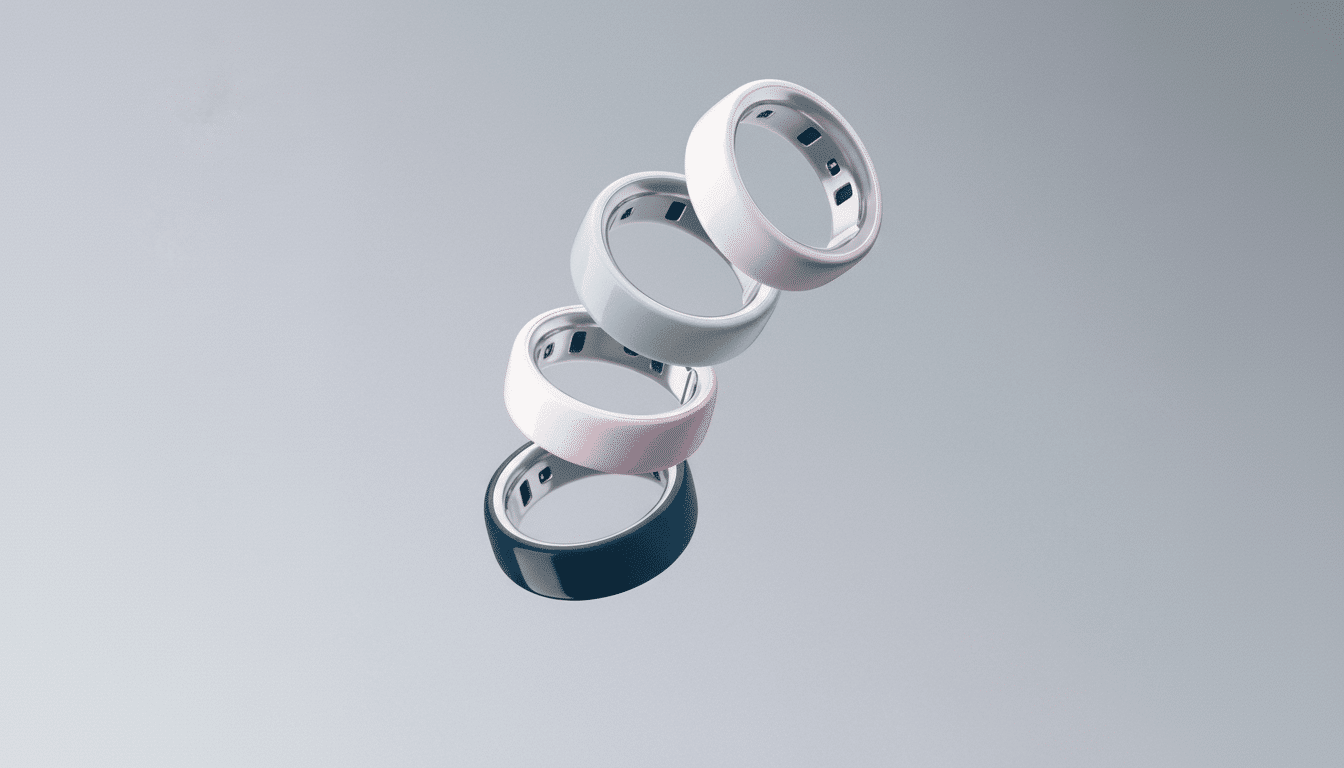Oura is scaling up its original ring line with a zirconia Ceramic collection, a travel‑friendly charging case(!), and new Health Panels feature that plugs clinical bloodwork right into the app. The updates try to push the ring further beyond sleep and recovery tracking and into a comprehensive personal health companion — while also doubling down on design, portability and day‑to‑day convenience.
Ceramic Collection Blends Style With Durability
The Oura Ring 4 Ceramic eschews metallic finishes in favour of zirconia ceramic — a material often found in high‑end watch bezels for its durability, resistance to colour fade and skin‑friendly touch. Because the pigments are baked into the ceramic, Oura says — as opposed to painted on or coated — the finish does not fade and maintains its sheen over time.

Available in Tide, Cloud, Petal and Midnight colorways, the rings come with a Polishing Pad that can be used to buff out marks from softer metals (dumbbells or cookware). Oura recommends slipping the ring on the non‑dominant hand to minimize knocks in daily wear — sensible guidance for any hard‑surface wearable that rubs up against gym gear and kitchen tools.
The Ceramic collection costs $499 and comes in sizes 4-15, with a membership of $5.99 per month or $69.99 per year.
That places Oura at the high end of smart rings even as competitors try on their own price ranges. For context, analysts following wearables say interest in rings has been increasing as phones and watches reach maturity; materials and industrial design are becoming as much a deciding factor for buyers who want something that can pass at a dinner table as it does at the gym, as sensor specifications.
Portable Powercase for Every Frequent Traveler
Answering a top user request, Oura’s first Charging Case charges up to five full rings and is equipped with USB‑C. Both the case and the ring fully charge in about 90 minutes, according to the company. The case also serves as a secure storage vault when you’re not wearing the ring — it’s handy for the gym, flights, bedside routines.
At $99 the case solves a real-world pain point: rings are easily left behind on hotel nightstands and tough to top off without the proprietary puck.

Five more charges for those on the track and frequent fliers means a work week or so of use without having to think about battery levels (and this varies depending on how you wear the ring and which features are on).
Health Panels Bring Lab Biomarkers Into App
Through Health Panels, Oura members can order a blood draw at over 2,000 Quest Diagnostics locations in the United States for $99 and monitor up to 50 biomarkers along with daily sleep, readiness and activity information. Scores are presented in‑app, where Oura’s guidance makes clear what numbers are within range, which ones aren’t — and how that might relate to trends already picked up by the ring’s sensors.
Sample prompts such as “What does my A1C of 5.7% mean?” or “How do I get a better cholesterol profile?” speak to a trend toward clear and practical, plain‑English explanations. Even though wearables track things such as resting heart rate variability or skin temperature, combining these signals with lab‑verified lipids, glucose‑related markers, thyroid measures or inflammation can reveal links that individual data streams often fail to capture.
It’s a similar idea to one that has taken hold in the consumer health market more generally: Give people access to testing on their own terms, and provide context for results using information about their lives. Quest Diagnostics is an established national lab provider, and bringing its footprint into a consumer wearable app eliminates logistical hurdles that previously necessitated separate portals and physician visits. As always, these are educational and not diagnostic tools — please discuss out‑of‑range values with a health care provider. Groups like the American Heart Association and professional medical societies have been quick to emphasize that decisions about care should still be made in concert with clinicians.
Multi‑Ring Support And Outlook For Ecosystem
Oura now allows multiple Ring 4s to be paired to one account, so you can switch colors or assign a specific ring for the gym. That may seem cosmetic, but it speaks to how people really wear jewelry: Style changes per setting, and having a backup cuts down on downtime if one ring is on the charger or at the cleaners.
Together, Ceramic hardware, a slim-line charging case with a power‑dense battery and Health Panels help round off Oura’s pitch in an increasingly busy market for smart rings that are slowly going mainstream. The company is leaning in on two selling points that ring buyers either warm to or don’t find useful: the discretion of its form factor and immediate context. If Oura can manage to maintain signal quality while growing the materials, and if its guidance sticks close to the evidence of known sources, it will have a plausible route to staying as the reference device for ring‑based tracking of sleep and recovery — now with a clearer view toward lab results that people generally only get once a year.

